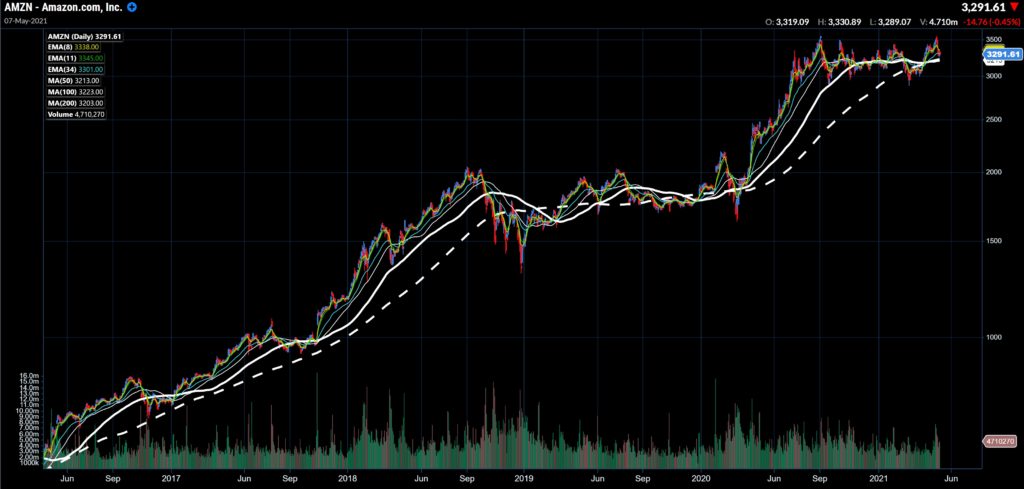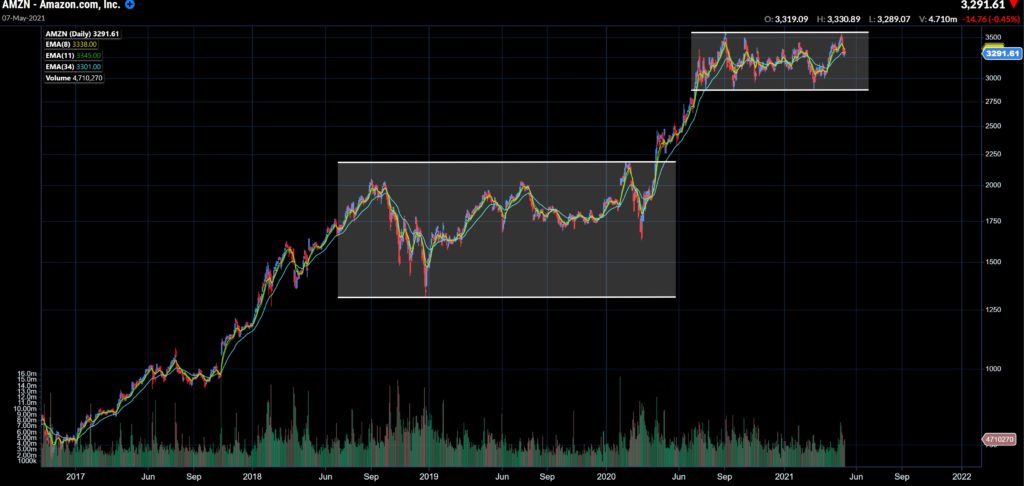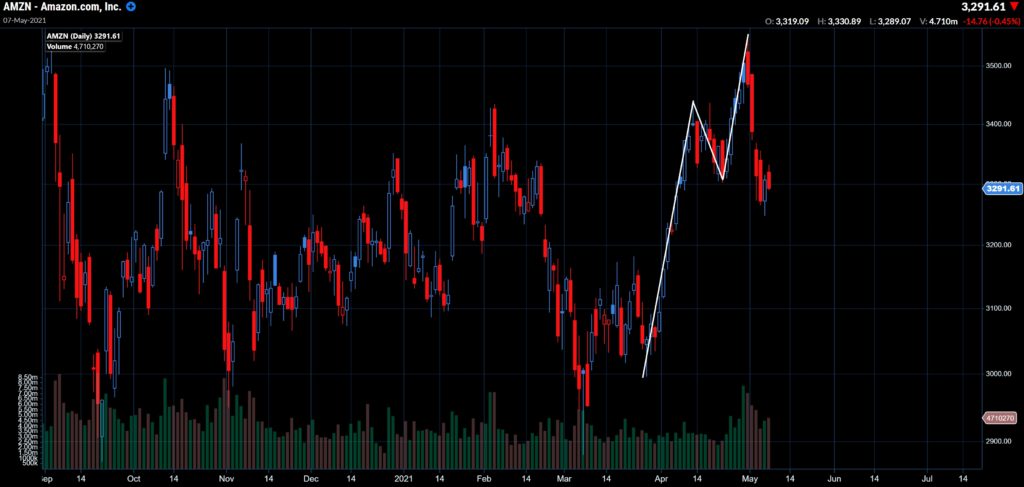

Date: 5/11/2021
Author: Chris Hood
Be sure to check out new episodes of my video podcast each week, where my ace pupil Brian Jones and I talk the ins and outs of options trading- and give you insights and strategy that you can immediately put to work for you in the markets.
You’d never take a road trip without consulting a map.
Even in the era of GPS technology, planning a trip usually starts with some sort of map, digital or otherwise.
Setting out without a plan might lead to some crazy adventures. Still, you’re not getting to your destination quickly or efficiently.
And should you get stuck with no cell signal, you might get lost entirely.
Think of stock charts as your map for a trade.
Placing any trade without consulting its charts is one of the single most irresponsible and potentially costly mistakes a trader can make.
I can’t think of any trading platform that doesn’t provide at least some charting capability.
But if yours doesn’t, any number of subscription services are available for very little money – StockCharts, TradingView, and Finviz are just a few that I use.
Each chart tells a story about a stock.
Learn to interpret this story, and you’ll start getting an idea of what the stock is likely to do.
Is the stock in a strong uptrend or downtrend?
Is it prone to large, volatile swings in price, or does it tend to grind its way along?
Is bouncing around in a range?
Is a trend reversal imminent, and if so, in what direction is it likely to go?
There’s an art and science to reading and learning to apply advanced indicators to the charts. Unfortunately, it takes lots of practice to get these right.
Yet, many charting basics are common sense.
Let’s look at an example using AMZN.


I’ve plotted several moving averages, including short duration exponential moving averages (8, 11, and 21 day) and two longer-term simple moving averages – the 50 and 200 day.
In a long-duration trade, you could see that when the price broke below the 50 or 200, it tended to move down for some time.
These indicators help you know when to stay in and when to get out to protect your profits.
Even something as basic as this will do wonders for your trading.
Never go short on an uptrending stock or go long during a downtrend.
It doesn’t matter at all what you believe a ticker SHOULD do. All that matters is what it IS doing.
Determining this is only possible by chart reading.
Now let’s look at AMZN on a slightly shorter daily chart as an example of range-bound price action or trading within channels and see what happens when it breaks out.


The two white channels show how the price tended to bounce between two lines – support and resistance.
There were ample opportunities to play short-term up or downswings in this zone. Finding patterns in stock behavior is a critical component of trade set-ups.
These channels would have been a cash cow for short-term swing traders.
But the big play was recognizing the channel breakout, just as AMZN did in April 2020. My clients positioned ourselves appropriately and raked in cash on this runup.
If we zoom in a bit closer, you can see that these rises are punctuated by pull-backs.


Each time a stock runs up to a new all-time high and gets too over-extended, it tends there tends to be a quick sell-off before it continues to climb.
It’s just basic human psychology.
Everyone in the market wants to make money, so for any bullish move, expect some profit-taking. When big money takes profits, the price drops.
With just a bit of chart reading skill and some knowledge of fundamental technicals such as Keltner channels, these pull-backs become easy to predict.
For short-term traders, an over-extension is an opportunity to sell for cash, wait for the start of the next move, and get back in. However, if you’re in a trade for the long trend, a healthy pull-back to a firm level of support lets you add to your position and scale in.
Ignore charts, and you will go broke; it’s as simple as that.
Stocks tend to tell you what they’re likely to do, but you have to listen and understand.
You can only do that if you speak their language.
For more information, follow our Hood Talk YouTube channel, and if you really want to up your game, I’m ready to be your coach.
Cash in on my newest service and become an Alpha Hunter.
Next time we’ll discuss one of the essential bearish trades, the long put.







